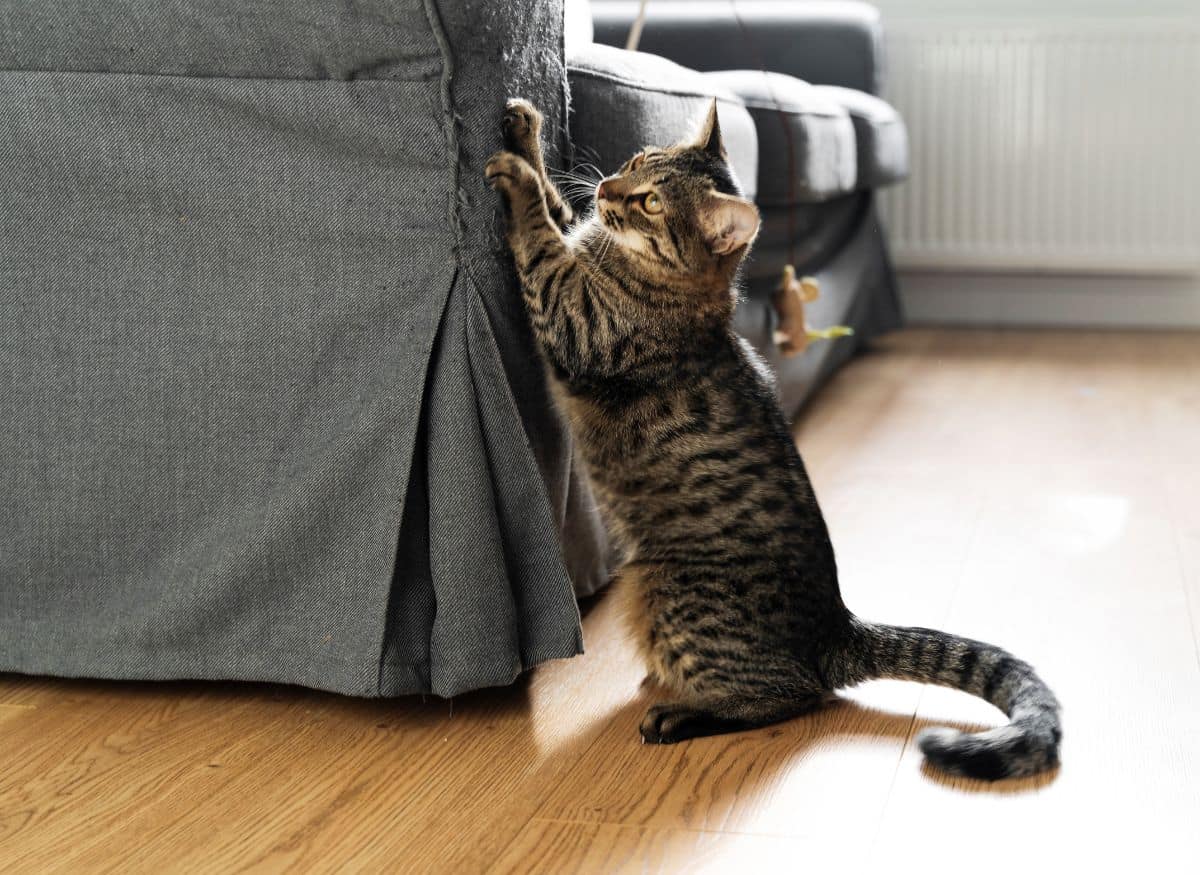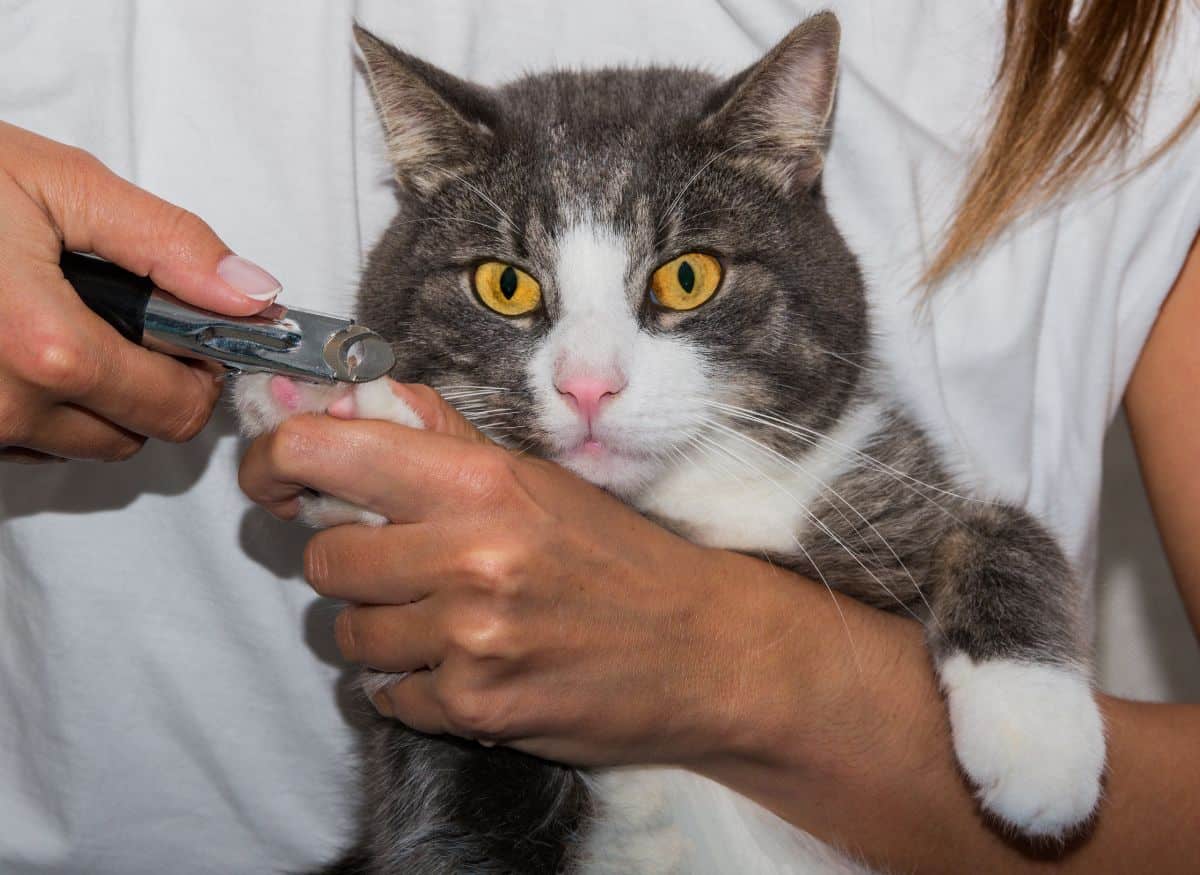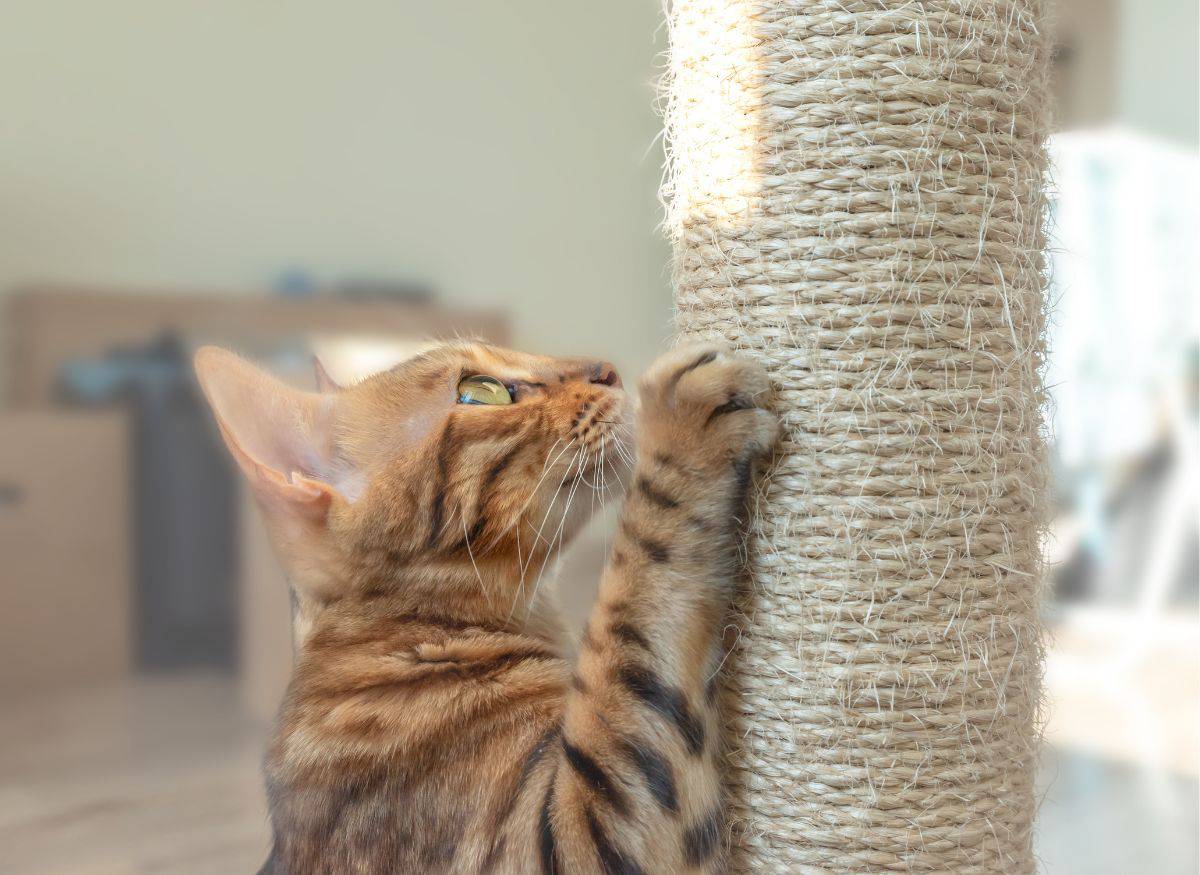Have you ever wondered how to protect your couch or sofa from the relentless scratching of your feline friend? It can be frustrating to see your furniture damaged, but before you resort to drastic measures, it’s essential to understand why cats scratch in the first place.

Cats scratch to mark their territory and keep their claws sharp. It’s a natural behavior deeply ingrained in their instincts. Punishing them for scratching is not the solution; redirecting their behavior can help preserve your furniture and maintain a harmonious home.
From understanding different materials that attract cats’ attention to introducing appropriate scratching posts, we’ll guide you through practical steps to address this issue. Cats make great pets, so let’s dive in and discover how to create an environment where cats and furniture coexist peacefully.
Teach your cat to stop scratching furniture
Positive reinforcement techniques should be used to train cats not to scratch furniture. Always avoid punishing your furry friend for their natural behavior. Here are some tips:
- Provide alternative scratching surfaces: Invest in a sturdy scratching post or a cat tree with built-in scratching posts. Place these items near the furniture your cat tends to scratch. You can redirect their behavior by giving them an appealing and acceptable option.
- Make the alternatives attractive: Sprinkle catnip on the scratching post or use a pheromone spray to attract cats. This will make the alternative surfaces more enticing and increase the likelihood of your cat using them instead of your furniture.
- Use positive reinforcement: Whenever you catch your cat using the designated scratching surface, offer praise, treats or playtime as a reward. Positive reinforcement helps reinforce good behaviors and encourages repetition.
- Consistency is key: Be consistent in redirecting your cat’s attention towards the appropriate surfaces whenever they attempt to scratch furniture. Over time, they will learn that their preferred spot for scratching is no longer acceptable.
- Patience pays off: Remember that training takes time and effort. It may take several weeks or months for your cat to adjust their behavior fully. Stay patient and persistent throughout the process.
Remember, avoiding punishment or negative reinforcement is essential when teaching your cat not to scratch furniture. These methods can create fear or anxiety in your pet and may worsen the problem rather than solve it.
You can teach your cat to stop scratching your furniture by implementing positive reinforcement techniques, providing alternative options and remaining consistent and patient. With a little training, cats can be low-maintenance pets in your home.

Practical techniques for preventing furniture scratching
Regular nail trimming helps reduce the need for scratching. By keeping your cat’s nails short, you can minimize the damage they can cause to your furniture.
Using deterrent sprays or scents can discourage cats from scratching specific areas. These products are designed to have an unpleasant smell or taste that cats dislike, deterring them from furniture.
Covering furniture with protective materials like blankets or slipcovers can provide a barrier between your cat’s claws and the furniture’s surface. This helps minimize scratches and keeps your furniture looking new.
Cats often scratch out of boredom or to release excess energy. Redirect their attention away from furniture by providing engaging toys and spending quality playtime with them.
Best products for redirecting your cat’s scratching behavior
You can turn your cat’s scratching behavior away from your furniture by providing alternative options like cat trees or posts with different textures. Here are the best products to purchase:
- Cat trees or scratching posts with different textures are ideal alternatives for scratching. Look for options that have sisal rope, cardboard or carpeted surfaces. My cats like the taller cat trees which give them a lookout spot as well as a place to nap.
- Sisal rope, cardboard or carpeted surfaces on scratchers mimic the texture of tree bark and encourage cats to use the scratcher instead of your furniture. You may need to try all to see what surface your cat prefers. My cats seem to like the berber carpeting but they also scratch the sisal rope style. I haven’t had a lot of luck with cardboard.
- Interactive toys that mimic prey-like movements can engage cats in active play instead of destructive scratching. Opt for toys with feathers, strings or small plush animals attached. My favorite cat toy is a simple laser pointer.
- A vertical scratcher provides opportunities for full-body stretching and exercise. Cats love to stretch vertically, so having a tall scratching post or tree allows them to fulfill this need away from furniture. Look for options that have multiple levels and platforms where they can climb and perch. For vertical scratching, I place cat trees throughout the house.
Remember that each cat is unique in their preferences, so finding the best product that works for your feline friend may take trial and error. You can also try adding indoor plants safe for cats in their scratching areas.

Alternatives to declawing: Providing appropriate scratching areas
To prevent cats from scratching furniture, it is important to provide them with suitable alternatives. Here are some effective strategies:
- Offering multiple vertical and horizontal scratching options throughout the house is essential. This provides cats with various choices for satisfying their natural urge to scratch.
- Scratching pads placed near favorite resting spots encourage positive associations with those areas. Cats are more likely to use designated scratchers if they are conveniently located near their preferred lounging spots.
- Sprinkling catnip on designated scratchers attracts cats towards them while deterring them from furniture. The scent of catnip is irresistible to most felines, making it a useful tool in redirecting their scratching behavior.
- Creating DIY cardboard scratchers allows customization based on your cat’s preferences. By crafting your own scratcher, you can tailor it to suit your cat’s specific needs and preferences.
Remember that declawing should always be considered as a last resort due to its potential negative impact on a cat’s physical and behavioral well-being. If you are unsure about the best approach for your cat, consult a veterinary behaviorist who can provide expert guidance.

Exploring the benefits of using scratch tape on furniture
Temporary scratch tape can be applied to furniture as a deterrent. The adhesive-backed tape is specifically designed to protect your furniture from your cat’s scratching instincts.
Scratch tape is safe for furniture and does not leave any residue. Once you remove the tape, there shouldn’t be any sticky marks or residue left behind.
The sticky texture of the tape discourages cats from scratching on treated surfaces. Cats dislike the feeling of stickiness on their paws, so when they encounter scratch tape, they quickly learn to avoid it.
Once your feline friend understands where they shouldn’t go, you can gradually remove the tape. It provides a temporary solution while training your cat to respect boundaries.
Successfully stopping cats from scratching furniture
You can save your beloved couches and chairs from sharp claws by teaching your cat appropriate scratching behavior, providing suitable alternatives and using scratch tape on furniture. Consistency is critical in training your cat, so be patient and persistent.
Now it’s time to put these strategies into action. With time and positive reinforcement, your cat will learn to redirect their scratching behavior appropriately.